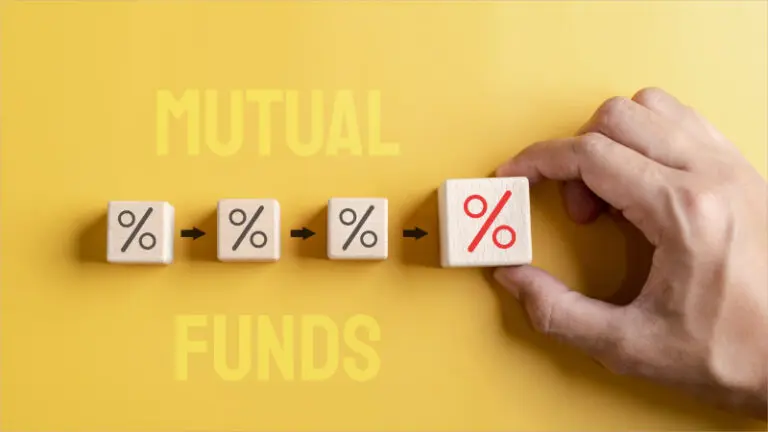
WHY RISK ADJUSTED RETURNS
An interesting way to look at the performance of funds over a longer period of time is the risk adjusted returns. Two similar fund earning similar returns may be very different if you look at the level of risk. For instance, a fund that generated 13% returns with 12% standard deviation is substantially better than a fund that generated 14% returns with 25% standard deviation. That is where risk adjusted returns come in handy. Here we look at the risk adjusted returns based on the various fund categories, to understand which categories are scoring on risk adjusted returns. But, how have we gone about the risk-adjusted returns?
We have used the average returns of the particular category as the benchmark return for the category. For the risk measure we use range instead of standard deviation as it is simpler and prone to less assumptions. The range in this case for any category would be the difference between the highest return and the lowest return in that category. That is a fair measure of volatility and risk. When the average returns are divided by this range factor, we get the risk-adjusted returns. It is on this risk adjusted returns that each of the categories of funds are ranked. Here, the risk-adjusted return does not mean much in isolation. What it does tell us is how they rank vis-à-vis others over a 10-year period.
CAPITALIZATION FUNDS: RANKING ON RISK ADJUSTED RETURNS
Here we rank the various fund capitalization categories on risk adjusted returns as of November 2024. These returns pertain to a 10-year period CAGR returns.
| Active Equity Funds – MCAP | Average | Best | Worst | Range | Risk-Adj Returns |
| Multi-Cap | 15.39 | 19.25 | 13.09 | 6.16 | 2.4984 |
| Large-Cap | 11.96 | 14.79 | 9.09 | 5.70 | 2.0982 |
| Mid-Cap | 16.86 | 21.66 | 13.37 | 8.29 | 2.0338 |
| Small-Cap | 18.38 | 23.37 | 14.14 | 9.23 | 1.9913 |
| Large & Mid- Cap | 14.75 | 19.19 | 10.07 | 9.12 | 1.6173 |
| Flexi Cap | 13.39 | 19.39 | 8.63 | 10.76 | 1.2444 |
Data Source : Morningstar
What do we read from the categorization above. Among the various capitalization categories, it is the multi-cap fund that have done really well. Ironically, while flexi-caps are found right at the bottom. Goes to show that more fund manager discretion has added to the risk and volatility without adding proportionately to the returns. Not surprisingly, large caps rank above mid-caps and small caps. While they have earned lower average returns, they have scored on lower volatility risk. Discretion literally ranks at the bottom of the list.
EQUITY THEMATIC FUNDS: RANKING ON RISK ADJUSTED RETURNS
Here we rank the various fund thematic categories on risk adjusted returns as of November 2024. These returns pertain to a 10-year period CAGR returns.
| Active Equity Funds – Thematic | Average | Best | Worst | Range | Risk-Adj Returns |
| Equity – ESG | 12.83 | 13.26 | 12.40 | 0.86 | 14.9186 |
| Sector – FMCG | 12.88 | 13.14 | 11.64 | 1.50 | 8.5867 |
| Sector – Technology | 17.87 | 19.44 | 15.05 | 4.39 | 4.0706 |
| Sector – Healthcare | 14.58 | 16.73 | 12.69 | 4.04 | 3.6089 |
| Dividend Yield | 13.91 | 15.99 | 11.72 | 4.27 | 3.2576 |
| Value | 14.77 | 18.13 | 12.17 | 5.96 | 2.4782 |
| Contra | 15.15 | 17.84 | 11.37 | 6.47 | 2.3416 |
| Focused Fund | 13.54 | 17.03 | 10.54 | 6.49 | 2.0863 |
| Equity- Infrastructure | 15.37 | 18.99 | 10.44 | 8.55 | 1.7977 |
| Sector – Financial Services | 10.88 | 16.06 | 9.84 | 6.22 | 1.7492 |
| ELSS (Tax Savings) | 13.74 | 21.95 | 9.67 | 12.28 | 1.1189 |
Data Source : Morningstar
Incidentally, the top ranked funds are not there due to higher returns but due to lower volatility risk. For instance, ESG Fund are fairly structured and hence the volatility is very low. The case is the same with FMCG funds also where the gains of low risk are very evident. Technology also figures at the top, but here it is the contribution of returns that is more prominent. At the bottom of the heap, you have ELSS funds, Financial services fund, and infrastructure funds where the risk volatility risk levels are inordinately high. The crown goes to the theme that manages it volatility risk better than the others.
HYBRID ALLOCATION FUNDS: RANKING ON RISK ADJUSTED RETURNS
Here we rank the various fund hybrid allocation categories on risk adjusted returns as of November 2024. These returns pertain to a 10-year period CAGR returns.
| Hybrid Allocation Funds | Average | Best | Worst | Range | Risk-Adj Returns |
| Balanced Allocation | 9.09 | 10.32 | 8.02 | 2.30 | 3.9522 |
| Equity Savings | 8.43 | 10.69 | 5.61 | 5.08 | 1.6594 |
| Dynamic Asset Allocation | 9.56 | 14.23 | 6.85 | 7.38 | 1.2954 |
| Aggressive Allocation | 12.09 | 17.13 | 7.03 | 10.10 | 1.1970 |
| Conservative Allocation | 7.10 | 10.89 | 3.87 | 7.02 | 1.0114 |
Data Source : Morningstar
What are the key takeaways from the ranking of the hybrid funds. Here discretionary funds appear to have don fairly well. At the top is the balanced allocation fund, which looks at a rule based allocation to equity and debt. Ironically, both the conservative and the aggressive hybrid fund are at the bottom. What ranks higher is the hybrid funds that mix their asset classes across a diversified low-correlation base. That is where the equity savings fund and the Balanced advantage Funds (BAFs) are scoring brownie points.
ACTIVE DEBT FUNDS: RANKING ON RISK ADJUSTED RETURNS
Here we rank the various active debt fund categories on risk adjusted returns as of November 2024. These returns pertain to a 10-year period CAGR returns.
| Active Debt Funds | Average | Best | Worst | Range | Risk-Adj Returns |
| Long Duration | 6.57 | 8.18 | 5.63 | 2.55 | 2.5765 |
| 10 yr Government Bond | 6.83 | 8.62 | 5.43 | 3.19 | 2.1411 |
| Floating Rate | 6.43 | 8.34 | 4.94 | 3.40 | 1.8912 |
| Medium to Long Duration | 6.04 | 8.38 | 4.03 | 4.35 | 1.3885 |
| Money Market | 5.72 | 7.80 | 3.52 | 4.28 | 1.3364 |
| Corporate Bond | 6.40 | 9.12 | 3.78 | 5.34 | 1.1985 |
| Ultra Short Duration | 5.49 | 7.84 | 3.04 | 4.80 | 1.1438 |
| Short Duration | 6.13 | 9.17 | 3.74 | 5.43 | 1.1289 |
| Low Duration | 5.67 | 7.87 | 2.11 | 5.76 | 0.9844 |
| Government Bond | 6.86 | 9.09 | 2.12 | 6.97 | 0.9842 |
| Credit Risk | 6.11 | 8.65 | 2.39 | 6.26 | 0.9760 |
| Medium Duration | 6.19 | 9.16 | 2.46 | 6.70 | 0.9239 |
| Dynamic Bond | 6.52 | 10.16 | 3.02 | 7.14 | 0.9132 |
| Banking & PSU | 6.27 | 8.46 | 0.00 | 8.46 | 0.7411 |
Data Source : Morningstar
You will find that the range of returns is quite narrow with respect to the different category of debt funds. Where these funds differ is on the volatility risk undertaken. For example, if you look at the top, there are the long duration funds, 10-year G-Sec Bond Fund, Floating Rate fund etc. These categories of funds have been profitable for investors despite giving sub-par returns as a category. The reason is the buy and hold strategy allows them the benefit of keeping risk levels low. In fact, more the discretion given to the fund managers, greater is the volatility risk generated and hence lower the risk adjusted returns.
ALTERNATE FUNDS: RANKING ON RISK ADJUSTED RETURNS
Here we rank the various alternate fund categories on risk adjusted returns as of November 2024. These returns pertain to a 10-year period CAGR returns.
| Alternate Funds | Average | Best | Worst | Range | Risk-Adj Returns |
| Sector – Precious Metals | 10.09 | 10.34 | 9.36 | 0.98 | 10.2959 |
| Arbitrage Fund | 5.91 | 8.68 | 4.54 | 4.14 | 1.4275 |
| Liquid | 5.18 | 6.75 | 0.00 | 6.75 | 0.7674 |
Data Source : Morningstar
We have considered 3 categories of fund here viz. precious metals, arbitrage funds, and liquid funds. As has been the experience in the past, it is the precious metals funds that hav outperformed this time too. Gold scores high on returns and also on risk, making it the pick among the alternate category of funds.
The risk-adjusted returns is a good measure of how reliable a particular strategy is. The trick of maintaining a good risk-adjusted return on a particular fund category is not to chase returns, but focus on keeping risk under control. If that can be managed, then even mediocre returns get magnified in reality. Low volatility, limited discretion to fund managers, and a rule-based approach to investing appears to be working favourably.
Related Tags

Invest wise with Expert advice
![]() IIFL Customer Care Number
IIFL Customer Care Number
(Gold/NCD/NBFC/Insurance/NPS)
1860-267-3000 / 7039-050-000
![]() IIFL Capital Services Support WhatsApp Number
IIFL Capital Services Support WhatsApp Number
+91 9892691696
IIFL Capital Services Limited - Stock Broker SEBI Regn. No: INZ000164132, PMS SEBI Regn. No: INP000002213,IA SEBI Regn. No: INA000000623, SEBI RA Regn. No: INH000000248
ARN NO : 47791 (AMFI Registered Mutual Fund Distributor)

This Certificate Demonstrates That IIFL As An Organization Has Defined And Put In Place Best-Practice Information Security Processes.